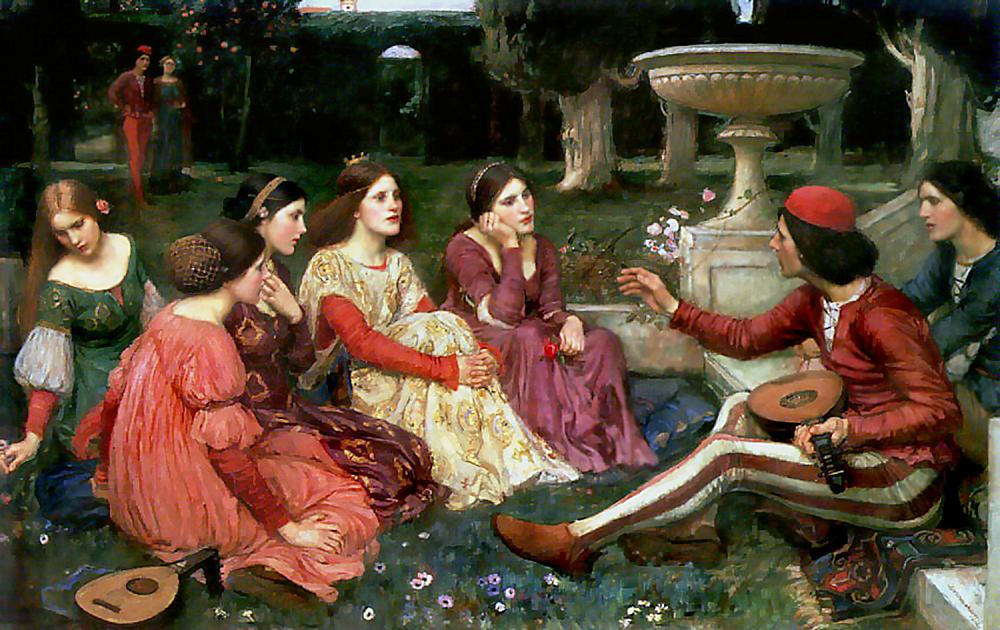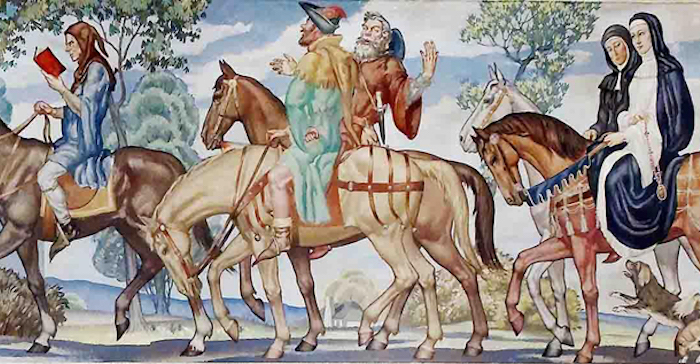Monday, 3 March 2025
Thursday, 28 March 2024
THE BALLAD THROUGH TIME - 3^C LINGUISTICO
Once
medieval ballads (=oral compositions passed on
from generation to generation) became popular, they began to borrow
freely from the carols (=religious
folk songs or popular hymns, especially associated with Christmas),
riddle songs, popular stories and romances of the time. Ballads were popular
throughout (=in every part of) Europe and the English-language ballad also
borrowed from other countries and cultures. Read here.
There
are examples of the ballad form from the Middle Ages right up to the
present day. The 16th century saw the gradual disappearance of the
old-style romances, along with the minstrels who used to recite and sing
them.
The
ballad form remained popular through the 17th and the 18th centuries,
which saw a revival especially of magic and supernatural themes.
In the 19th century
the poetry of the Romantics drew widely for inspiration on the materials of
folk narrative ballads and lyrical folk songs: Coleridge’s The Rime of the Ancient Mariner owes its
intense supernaturalism and its archaisms to traditional ballads;
Keats's La Belle Dame Sans Merci is a ballad about an encounter that involves both pleasure
and pain.
In
the 20th century an oral ballad
tradition still survived in England and the United States and the
term "ballad" was applied to a short song with a slow rhythm and
romantic or sentimental content.
In
the 1960s popular music in general became a space for cultural and
political conflict and dialogue. Bob Dylan started to use the form of the
ballad to protest against the Vietnam War when, in 1962, he used the
mixture of dialogue and narration of Lord Randal in his
song A Hard Rain’s A-Gonna Fall. Among his most famous
anti-war songs are Blowin’ in the Wind and Masters of
War.
The
ballad is still used in modern pop and folk music. Read here.
from Performer Heritage 1, Zanichelli, p. 63
Monday, 10 April 2023
THE CANTERBURY TALES - 3^C LINGUISTICO
The Canterbury Tales is known as the foundational English literary book of tales written in verse style by Geoffrey Chaucer. The author is famous as one of the pioneers of English poetry. The book was likely published around 1387 to 1400 when Chaucer joined the royal court. The stories, in verses, though some are in prose, present the social norms, characters, situations, and religious devotion of the pilgrims presented in them. The stories became so much popular and are considered classics across the globe. Read here.
Sunday, 18 April 2021
THE CANTERBURY TALES - 3^C LINGUISTICO
The Canterbury Tales by Geoffrey Chaucer (c. 1345–1400) was enormously popular in medieval England, with over 90 copies in existence from the 1400s.
Its popularity may be due to the fact that the tales were written in Middle English, a language that developed after the Norman invasion, after which those in power would have spoken French. Continuous publication of The Canterbury Tales since Chaucer's death, and the inspiration it has provided for other writers and artists, are testimony to the enduring appeal of his characters and their stories: proof that people's hopes and fears – and the English sense of humour – are little changed by six centuries of history. Read here.
Wednesday, 10 June 2020
THE LEGEND OF ROBIN HOOD
Monday, 25 May 2020
THE LEGEND OF KING ARTHUR


Saturday, 23 May 2020
Saturday, 16 May 2020
REVISING BALLADS

Its distinctive style crystallized in Europe in the late Middle Ages and persists to the present day in communities where literacy, urban contacts, and mass media have little affected the habit of folk singing. Read here.
Friday, 24 April 2020
Thursday, 28 February 2019
Monday, 3 April 2017
MAGNA CARTA - 3^C LINGUISTICO

Here you can find a PDF presentation of Magna Carta.
Saturday, 16 April 2016
Monday, 15 June 2015
Monday, 29 December 2014
GEOFFREY CHAUCER

Click here to revise the poem.
Thursday, 25 April 2013
MEDIEVAL LITERATURE
Thursday, 18 April 2013
ROBIN HOOD AND MAID MARIAN
Generations of wandering minstrels in the Middle
Ages spread stories far and wide in England by singing ballads about the
exploits of the violent but heroic yeoman Robin Hood who lived in Sherwood
Forest with his merry band of men and clashed with the Sheriff of Nottingham.
Maid Marian is the heroine of the Robin Hood legend in English folklore, often taken to be his lover. She is not mentioned in the early, medieval versions of the legend. Her history and circumstances are obscure, but she commanded high respect in Robin’s circle for her courage and independence as well as her beauty and loyalty. For this reason, she is celebrated by feminist commentators as one of the early strong female characters in English literature.
https://www.sacred-texts.com/neu/eng/child/ch150.htm
Wednesday, 17 April 2013
ROBIN HOOD
Monday, 25 March 2013
MEDIEVAL BALLADS
Here you can find useful material for revision.














